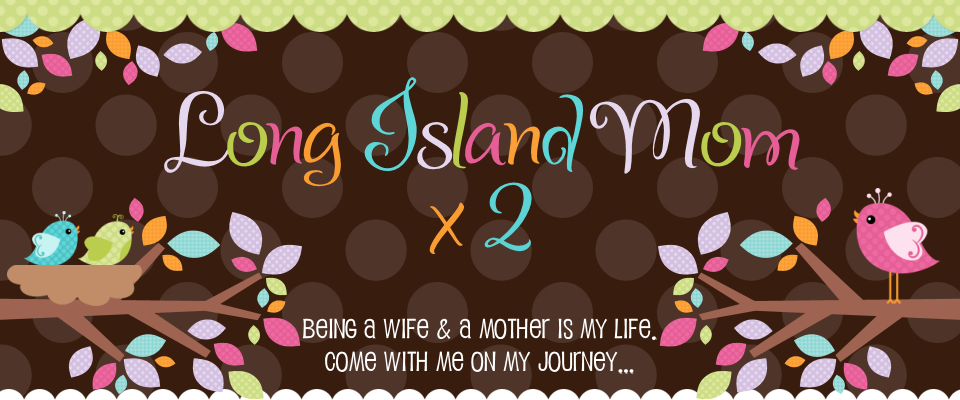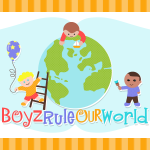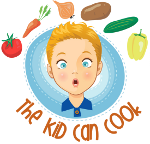| Q. | Flood waters covered our food stored on shelves and in cabinets. What can I keep and what should I throw out? |
| A. | Do not eat any food that may have come into contact with flood water.
- Discard any food that is not in a waterproof container if there is any chance that it has come into contact with flood water. Food containers that are not waterproof include those with screw-caps, snap lids, pull tops, and crimped caps. Also, discard cardboard juice/milk/baby formula boxes and home canned foods if they have come in contact with flood water, because they cannot be effectively cleaned and sanitized.
- Inspect canned foods and discard any food in damaged cans. Can damage is shown by swelling, leakage, punctures, holes, fractures, extensive deep rusting, or crushing/denting severe enough to prevent normal stacking or opening with a manual, wheel-type can opener.
Steps to Salvage All-Metal Cans and Retort Pouches
Undamaged, commercially prepared foods in all-metal cans and retort pouches (for example, flexible, shelf-stable juice or seafood pouches) can be saved if you do the following:
- Remove the labels, if they are the removable kind, since they can harbor dirt and bacteria.
- Thoroughly wash the cans or retort pouches with soap and water, using hot water if it is available.
- Brush or wipe away any dirt or silt.
- Rinse the cans or retort pouches with water that is safe for drinking, if available, since dirt or residual soap will reduce the effectiveness of chlorine sanitation.
- Then, sanitize them by immersion in one of the two following ways:
- Place in water and allow the water to come to a boil and continue boiling for 2 minutes, or
- Place in a freshly made solution consisting of 1 tablespoon of unscented, liquid chlorine bleach per gallon of drinking water (or the cleanest, clearest water available) for 15 minutes.
- Air-dry cans or retort pouches for a minimum of 1 hour before opening or storing.
- If the labels were removable, then re-label your cans or retort pouches, including the expiration date (if available), with a marker.
- Food in reconditioned cans or retort pouches should be used as soon as possible, thereafter.
- Any concentrated baby formula in reconditioned, all-metal containers must be diluted with clean, drinking water.
|
|
| Q. | How should I clean my pots, pans, dishes, and utensils? |
| A. | Thoroughly wash metal pans, ceramic dishes, and utensils (including can openers) with soap and water, using hot water if available. Rinse and then sanitize them by boiling in clean water or immersing them for 15 minutes in a solution of 1 tablespoon of unscented, liquid chlorine bleach per gallon of drinking water (or the cleanest, clearest water available). |
|
| Q. | How should I clean my countertops? |
| A. | Thoroughly wash countertops with soap and water, using hot water if available. Rinse and then sanitize them by applying a solution of 1 tablespoon of unscented, liquid chlorine bleach per gallon of drinking water (or the cleanest, clearest water available). Allow to air-dry. |
|
| Q. | My home was flooded and I am worried about the safety of the drinking water. What should I do? |
| A. | Use bottled water that has not been exposed to flood waters if it is available.
- If you don't have bottled water, you should boil water to make sure it is safe. Boiling water will kill most types of disease-causing organisms that may be present. If the water is cloudy, filter it through clean cloths or allow it to settle, and draw off the clear water for boiling. Boil the water forone minute, let it cool, and store it in clean containers with covers.
- If you can't boil water, you can disinfect it using household bleach. Bleach will kill some, but not all, types of disease-causing organisms that may be in the water. If the water is cloudy, filter it through clean cloths or allow it to settle, and draw off the clear water for disinfection. Add 1/8 teaspoon (or 8 drops) of regular, unscented, liquid household bleach for each gallon of water, stir it well and let it stand for 30 minutes before you use it. Store disinfected water in clean containers with covers.
- If you have a well that had been flooded, the water should be tested and disinfected after flood waters recede. If you suspect that your well may be contaminated, contact your local or state health department or agriculture extension agent for specific advice.
|
|
| Q. | We had a fire in our home and I am worried about what food I can keep and what to throw away. |
| A. | Discard food that has been near a fire. Food exposed to fire can be damaged by the heat of the fire, smoke fumes, and chemicals used to fight the fire. Food in cans or jars may appear to be okay, but the heat from a fire can activate food spoilage bacteria. If the heat is extreme, the cans or jars themselves can split or rupture, rendering the food unsafe.
One of the most dangerous elements of a fire is sometimes not the fire itself, but toxic fumes released from burning materials. Discard any raw food or food in permeable packaging—cardboard, plastic wrap, screw-topped jars, bottles, etc.—stored outside the refrigerator. Food stored in refrigerators or freezers can also become contaminated by fumes. The refrigerator seal isn't airtight and fumes can get inside. Chemicals used to fight the fire contain toxic materials and can contaminate food and cookware. Food that is exposed to chemicals should be thrown away—the chemicals cannot be washed off the food. This includes food stored at room temperature, such as fruits and vegetables, as well as food stored in permeable containers like cardboard and screw-topped jars and bottles. Cookware exposed to fire-fighting chemicals can be decontaminated by washing in soap and hot water. Then submerge for 15 minutes in a solution of 1 tablespoon unscented, liquid chlorine bleach per gallon of water. |
|
| Q. | A snowstorm knocked down the power lines, can I put the food from the refrigerator and freezer out in the snow? |
| A. | No, frozen food can thaw if it is exposed to the sun's rays even when the temperature is very cold. Refrigerated food may become too warm and foodborne bacteria could grow. The outside temperature could vary hour by hour and the temperature outside will not protect refrigerated and frozen food. Additionally, perishable items could be exposed to unsanitary conditions or to animals. Animals may harbor bacteria or disease; never consume food that has come in contact with an animal. Rather than putting the food outside, consider taking advantage of the cold temperatures by making ice. Fill buckets, empty milk cartons or cans with water and leave them outside to freeze. Then put the homemade ice in your refrigerator, freezer, or coolers. |
|
| Q. | Some of my food in the freezer started to thaw or had thawed when the power came back on. Is the food safe? How long will the food in the refrigerator be safe with the power off? |
| A. | Never taste food to determine its safety! You will have to evaluate each item separately. If an appliance thermometer was kept in the freezer, read the temperature when the power comes back on. If the appliance thermometer stored in the freezer reads 40 °F or below, the food is safe and may be refrozen. If a thermometer has not been kept in the freezer, check each package of food to determine the safety. Remember you can’t rely on appearance or odor. If the food still contains ice crystals or is 40 °F or below, it is safe to refreeze. Refrigerated food should be safe as long as power is out no more than 4 hours. Keep the door closed as much as possible. Discard any perishable food (such as meat, poultry, fish, eggs, and leftovers) that have been above 40 °F for 2 hours. |
|
| Q. | May I refreeze the food in the freezer if it thawed or partially thawed? |
| A. | Yes, the food may be safely refrozen if the food still contains ice crystals or is at 40 °F or below. You will have to evaluate each item separately. Be sure to discard any items in either the freezer or the refrigerator that have come into contact with raw meat juices. Partial thawing and refreezing may reduce the quality of some food, but the food will remain safe to eat. See the attached charts for specific recommendations. |
|
| When to Save and When to Throw It Out |
|---|
| FOOD | Held above 40 °F for over 2 hours |
|---|
| MEAT, POULTRY, SEAFOODRaw or leftover cooked meat, poultry, fish, or seafood; soy meat substitutes |
Discard |
| Thawing meat or poultry | Discard |
| Meat, tuna, shrimp,chicken, or egg salad | Discard |
| Gravy, stuffing, broth | Discard |
| Lunchmeats, hot dogs, bacon, sausage, dried beef | Discard |
| Pizza – with any topping | Discard |
| Canned hams labeled "Keep Refrigerated" | Discard |
| Canned meats and fish, opened | Discard |
| CHEESESoft Cheeses: blue/bleu, Roquefort, Brie, Camembert, cottage, cream, Edam, Monterey Jack, ricotta, mozzarella, Muenster, Neufchatel, queso blanco, queso fresco |
Discard |
| Hard Cheeses: Cheddar, Colby, Swiss, Parmesan, provolone, Romano | Safe |
| Processed Cheeses | Safe |
| Shredded Cheeses | Discard |
| Low-fat Cheeses | Discard |
| Grated Parmesan, Romano, or combination (in can or jar) | Safe |
| DAIRYMilk, cream, sour cream, buttermilk, evaporated milk, yogurt, eggnog, soy milk |
Discard |
| Butter, margarine | Safe |
| Baby formula, opened | Discard |
| EGGSFresh eggs, hard-cooked in shell, egg dishes, egg products |
Discard |
| Custards and puddings | Discard |
| CASSEROLES, SOUPS, STEWS | Discard |
FRUITS
Fresh fruits, cut |
Discard |
| Fruit juices, opened | Safe |
| Canned fruits, opened | Safe |
| Fresh fruits, coconut, raisins, dried fruits, candied fruits, dates | Safe |
| SAUCES, SPREADS, JAMSOpened mayonnaise, tartar sauce, horseradish |
Discard if above 50 °F for over 8 hrs. |
| Peanut butter | Safe |
| Jelly, relish, taco sauce, mustard, catsup, olives, pickles | Safe |
| Worcestershire, soy, barbecue, Hoisin sauces | Safe |
| Fish sauces (oyster sauce) | Discard |
| Opened vinegar-based dressings | Safe |
| Opened creamy-based dressings | Discard |
| Spaghetti sauce, opened jar | Discard |
| BREAD, CAKES, COOKIES,PASTA, GRAINSBread, rolls, cakes, muffins, quick breads, tortillas |
Safe |
| Refrigerator biscuits,rolls, cookie dough | Discard |
| Cooked pasta, rice, potatoes | Discard |
| Pasta salads with mayonnaise or vinaigrette | Discard |
| Fresh pasta | Discard |
| Cheesecake | Discard |
| Breakfast foods –waffles, pancakes, bagels | Safe |
| PIES, PASTRYPastries, cream filled |
Discard |
| Pies – custard,cheese filled, or chiffon; quiche | Discard |
| Pies, fruit | Safe |
| VEGETABLESFresh mushrooms, herbs, spices |
Safe |
| Greens, pre-cut, pre-washed, packaged | Discard |
| Vegetables, raw | Safe |
| Vegetables, cooked; tofu | Discard |
| Vegetable juice, opened | Discard |
| Baked potatoes | Discard |
| Commercial garlic in oil | Discard |
| Potato Salad | Discard |
| When to Save and When To Throw It Out |
|---|
| FOOD | Still contains ice crystals and feels as cold as if refrigerated | Thawed.
Held above 40 °F for over 2 hours |
|---|
| MEAT, POULTRY, SEAFOODBeef, veal, lamb, pork, and ground meats |
Refreeze |
Discard |
| Poultry and ground poultry | Refreeze | Discard |
| Variety meats (liver, kidney, heart, chitterlings) | Refreeze | Discard |
| Casseroles, stews, soups | Refreeze | Discard |
| Fish, shellfish, breaded seafood products | Refreeze. However, there will be some texture and flavor loss. | Discard |
| DAIRYMilk |
Refreeze. May lose some texture. |
Discard |
| Eggs (out of shell) and egg products | Refreeze | Discard |
| Ice cream, frozen yogurt | Discard | Discard |
| Cheese (soft and semi-soft) | Refreeze. May lose some texture. | Discard |
| Hard cheeses | Refreeze | Refreeze |
| Shredded cheeses | Refreeze | Discard |
| Casseroles containing milk, cream, eggs, soft cheeses | Refreeze | Discard |
| Cheesecake | Refreeze | Discard |
FRUITS
Juices |
Refreeze |
Refreeze. Discard if mold, yeasty smell, or sliminess develops. |
| Home or commercially packaged | Refreeze. Will change texture and flavor. | Refreeze. Discard if mold, yeasty smell, or sliminess develops. |
VEGETABLES
Juices |
Refreeze |
Discard after held above 40 °F for 6 hours. |
| Home or commercially packaged or blanched | Refreeze. May suffer texture and flavor loss. | Discard after held above 40 °F for 6 hours. |
| BREADS, PASTRIESBreads, rolls, muffins, cakes (without custard fillings) |
Refreeze |
Refreeze |
| Cakes, pies, pastries with custard or cheese filling | Refreeze | Discard |
| Pie crusts, commercial and homemade bread dough | Refreeze. Some quality loss may occur. | Refreeze. Quality loss is considerable. |
| OTHERCasseroles – pasta, rice based | Refreeze | Discard |
| Flour, cornmeal, nuts | Refreeze | Refreeze |
| Breakfast items –waffles, pancakes, bagels | Refreeze | Refreeze |
| Frozen meal, entree, specialty items (pizza, sausage and biscuit, meat pie,convenience foods) | Refreeze | Discard |
|









































